Could hope of reopening coastal razor clam beaches be on the distant horizon? In the meantime anglers can head east of the Cascades for big trout and kokanee Leave a reply
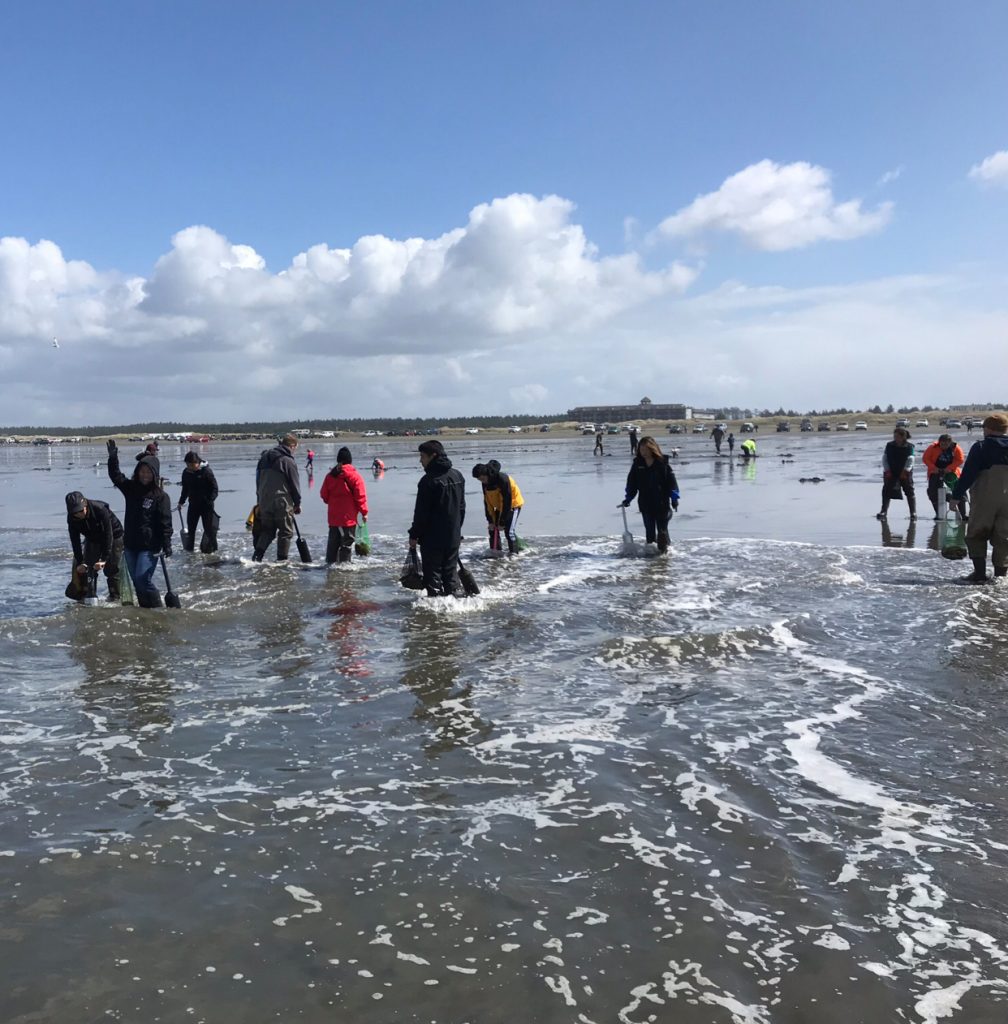
By Mark Yuasa
The road back to digging coastal razor clams remains an uphill battle, but there is some positivity brewing, according to a fisheries manager who really has his finger on the pulse of razor clam news.
“We’ve found no issues of marine toxins in the water so that’s a bit of good news,” said Dan Ayres, the head Washington Department of Fish and Wildlife (WDFW) coastal shellfish manager. “Now we have to wait for razor clams to flush it out of their system, which takes an extended amount of time.”
As WDFW reported in December, razor clams are following a historical pattern of slowly depurating (losing or flushing) domoic acid – a natural toxin produced by certain types of marine algae – out of their bodies. They’re also observing the levels “bounce around” some, as they have in past events as the toxin “load” can vary greatly between individual clams.
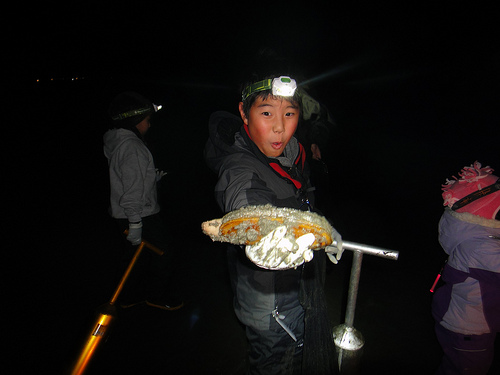
Domoic acid while not harmful to shellfish can be detrimental to humans if consumed in high enough quantities. The impacts vary from nausea and headaches to more severe symptoms including neurological damage, seizures and even death.
The big spike in domoic acid occurred this past October, and led to an emergency closure of the coastal razor clam season just as it was getting underway. The rise in marine toxin levels also wreaked havoc on the coastal Dungeness crab fisheries this winter too.
The latest razor clam test results collected on Jan. 11 still show high levels of marine toxins and will further delay any chance of reopening digging on beaches in the immediate future.
The Department of Health (DOH) require two samples must test under the action level of 20 parts per million (ppm) for domoic acid before a beach can reopen. The two samples must be spaced seven to 10 days apart, and collecting them has been ongoing by WDFW.
The latest test sample data showed 45 ppm for domoic acid at Long Beach; 43 ppm at Twin Harbors; 28 ppm at Copalis southern section; 25 ppm at Copalis middle section; 27 ppm at Copalis northern section; 36 ppm at Mocrocks middle section; and 25 ppm at Mocrocks northern section. No paralytic or diarrhoeic shellfish poisoning (PSP/DSP) had been detected on any beach.
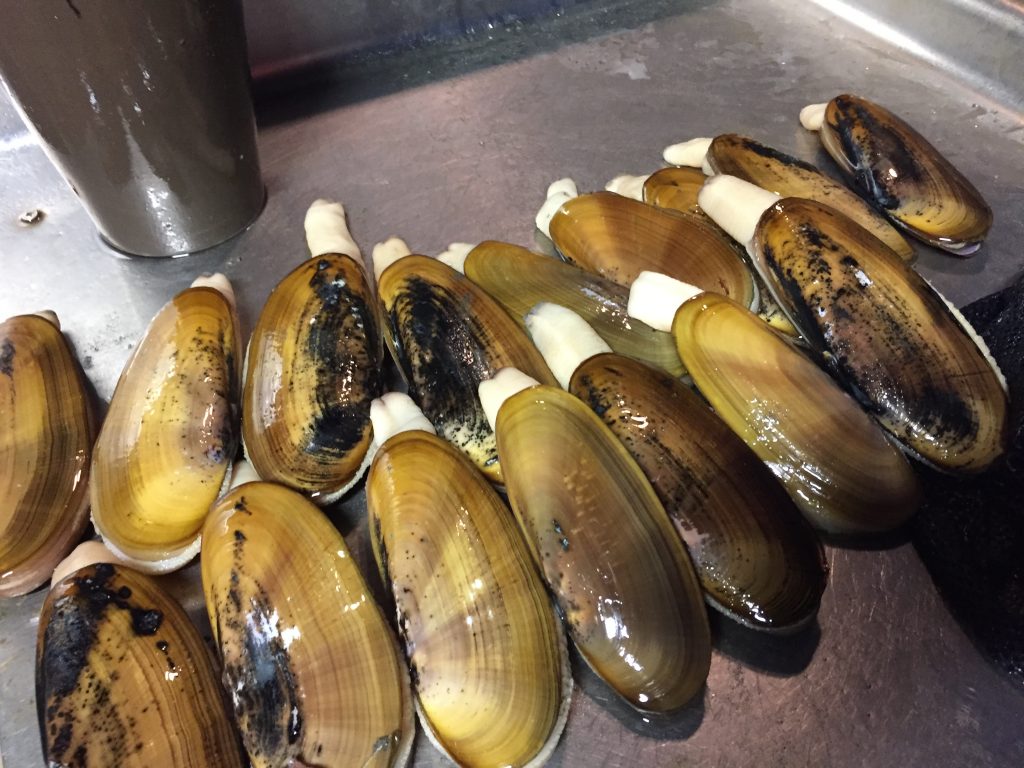
In past years, if a particular beach had shown levels were below the threshold then WDFW would open that specific beach even if others were still closed, but the pandemic has created a roadblock to opening them individually.
“When we first proposed a season (this past fall) we reached out to county governments to talk about crowds related to COVID, and came to an agreement about not opening an individual beach,” Ayres said. “It was an all or nothing agreement in order to avoid crowds of people gathered on one beach.”
“Since it appears there hasn’t been much change related to COVID-19, we’ll remain true to what we said back then,” he said. “When you look north of Grays Harbor the levels of domoic acid are lower and south of Grays Harbor are higher. That means you should keep your eye on beaches with the highest toxin levels, and not those with the lowest levels like you had done in the past.”
Since 1991, when the toxin was first detected on the Pacific Coast, outbreaks of domoic acid have prompted the cancellation of three entire razor-clam seasons in Washington — the last one in 2002-03. Twin Harbors Beach never opened in 2015-2016. The entire coast was also closed in late May of 2015 when domoic acid spiked well above the cut-off threshold.
The Chinook Observer recently did a story revealing a possible source of marine toxin issues that points to the warming trend and “Blob” in the ocean. Go to https://www.chinookobserver.com/news/local/toxic-spots-science-reveals-a-source-of-crab-and-clam-problems/article_f090c798-43cf-11eb-82d9-835ba59902ac.html.
Prior to the closure, diggers enjoyed off-the-charts digging when it opened on Sept. 16 with some of the best success rates seen in several decades.
The 12-days of digging from Sept. 16 to Oct. 20 saw 81,508 diggers with 1,222,732 clams (doesn’t include a clam wastage total of 80,277) for a 15.0 clam per person average – the first 15 clams dug regardless of size or condition is a daily limit.
A breakdown showed 32,020 diggers harvested 480,298 clams at Long Beach (open for 12 days); 19,403 with 291,158 at Twin Harbors (open for 12 days); 15,177 with 227,658 at Copalis (open for six days); and 14,908 with 223,619 at Mocrocks (open for six days).
“The one piece of good news is that it looks like we’ve peaked on the toxin levels and hopefully we can do something down the road,” Ayres said. “We’ll have to wait and see. I’m holding out hope there’s a chance we can do some digging later in spring and I haven’t given up on anything before that either.”
Central Puget Sound closing for salmon
Central Puget Sound (Marine Catch Area 10) will temporarily close this Tuesday (Jan. 19) after being open for a little more than two weeks. WDFW says the closure was necessary due to higher-than-expected fish encounters.
WDFW plans to allow more fishing time on the back end of a C-Sound season that was originally planned to be open through March 31. A reopening date hasn’t been determined although it will most likely occur sometime in March.
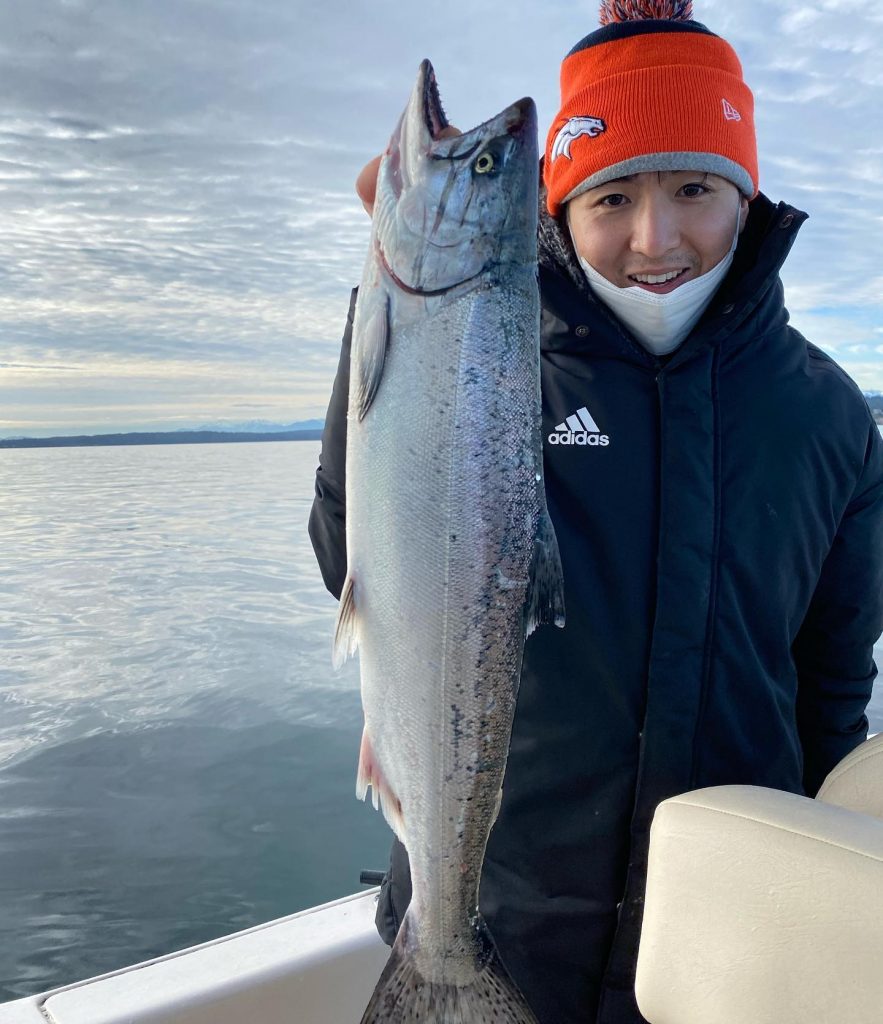
WDFW catch estimates showed 346 boats with 677 anglers from Jan. 1-10 had kept 76 hatchery-marked chinook and released 793 hatchery and 255 wild chinook.
To date (and not including Jan. 11-19) the total encounter was 1,238 of a 3,751 ceiling (33 percent or a difference of 2,513 fish); 282 of 579 total unmarked encounter (49 percent or 297 fish); and 1,087 of 3,224 total sub-legal encounter (34 percent or 2,137 fish). WDFW plans to manage this fishery to ensure it doesn’t exceed 120 percent of 4,501 predicted encounters.
The WDFW test fishing boat showed a 50 percent mark rate on legal-size fish and 76.4 percent overall mark rate.
This leaves only southern Puget Sound (Area 13) south of the Narrows Bridge in February, which is currently open year-round for hatchery chinook, although it’s virtually left untouched by winter anglers due to a presumed lack of fish.
Those still inclined to poke their noses in Area 13 should try Point Fosdick just south of the Narrows Bridge; Fox Island from Fox Point south to Concrete Dock; Gibson Point on south side of Fox Island; Lyle Point off south end of Anderson Island; Thompson Cove north of Lyle Point; outside the Narrows Marina; Hale Pass from Sandspit on western tip of Fox Island east to Ketner’s Point; and Johnson Point near Olympia.
Head east for good fishing opportunities
While anglers are eschewing in despair right now over a myriad of issues and restrictions regarding western Washington winter chinook and steelhead fisheries, many are beelining east to seek out their glory moments on the water with a high dividend.
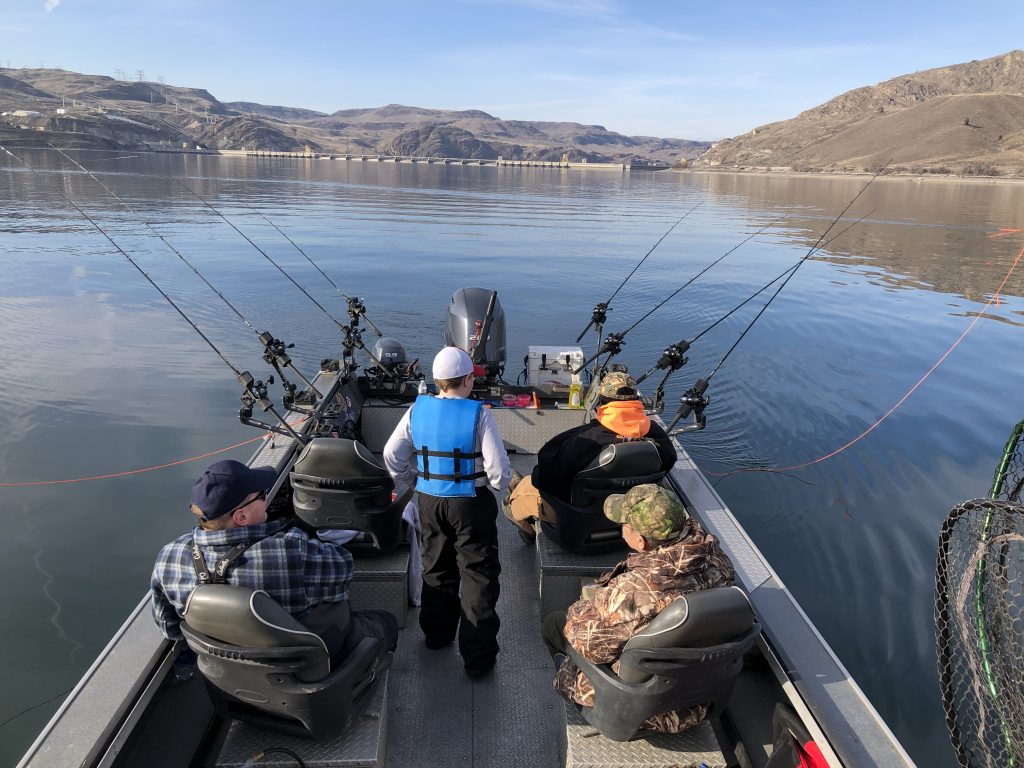
The Cascade mountains divide our state, and right now north-central and eastern Washington has been a nerve center for those looking to break through the ice for fish or hitting two large reservoirs for decent catches of large-sized kokanee and rainbow trout.
Temperatures often stay below freezing adding thick layers of ice on lakes that are within easy reach from the greater Seattle region via Interstate 90 or State Route 2.
“There are a lot of good ice fishing spots, and some less popular lakes that are equally or sometimes even better producers,” said Chad Jackson, a longtime Washington Department of Fish and Wildlife (WDFW) biologist in Ephrata.
Before dashing out the door always pay close attention to the weather forecast. If temperatures rise or rain is in the forecast then it’d be prudent to put an ice fishing trip on hold.
Other advice is to never venture on an icy lake alone, and make sure you’ve got at least four to five inches of ice under your boots with no cracks or changes on the surface of the lake. Be sure to stay off ice covered with snow or slush.
A sled comes in handy to transport gear. The necessary gear is a six- or eight-inch diameter hand auger (others prefer a more powerful electric auger); a snow shovel to clear away ice from the hole; an ice pick to check for thickness; 50 to 100 feet of safety rope; a tape measure or wooden ruler; and a life jacket.
Other will also pack a padded mat to keep your knees off the ice; a low-profile chair; and a rod holder. For those who really get into it will also bring a propane heater and portable fish finder.
A short, ultra-light fishing rod with a spinning reel works best such as a basic lightweight trout rod and reel. Tie your mainline to a small worm or egg-sized hook with a couple split-shot lead weights or a sliding sinker. A spring bobber will detect subtle bites. Fluorocarbon line makes it less visible as water clarity tends to be very clear.
There are a wide range of jigs used exclusively for ice fishing or a small spoon or spinner. Berkley Power Bait dough, nuggets or pre-shaped eggs, worms and maggots are go-getters as is a jar of salmon eggs. Lastly, be sure to pack along some worms, meal worms or maggots.
The difference between finding the motherlode of fish or going home skunked is moving around on the lake. If one spot doesn’t yield a catch move 25 to 50 feet away and dig another hole.
Top ice fishing lakes are Fish located 16-miles from Leavenworth; Curlew, two miles east of Republic; Patterson eight miles west of Winthrop; Moses off I-90; Sidley near Oroville; Roses near Lake Chelan; Davis southeast of Winthrop; Banks on Grant/Adams county line; Potholes in Grant County; Leader in Okanogan County; Williams north of Colville; Fourth of July in Adams County; and Palmer in Okanogan County near Loomis.
Two impoundments in north-central Washington producing hot fishing action are Lake Roosevelt between Grand Coulee and Clark for a mix of large-sized kokanee and rainbow trout; and Rufus Woods Reservoir where rainbow trout in excess of 5 pounds haven’t been uncommon this winter. Both offer excellent bank access fishing too.
For now, I refuse to go down with the ship in local westside waters, and will be making plans to head east. I’ll see you on the water soon!

